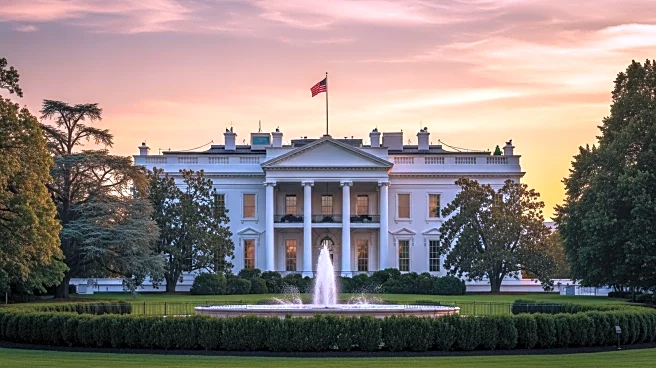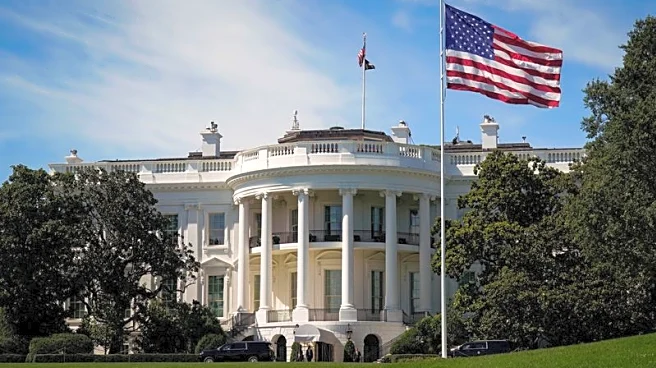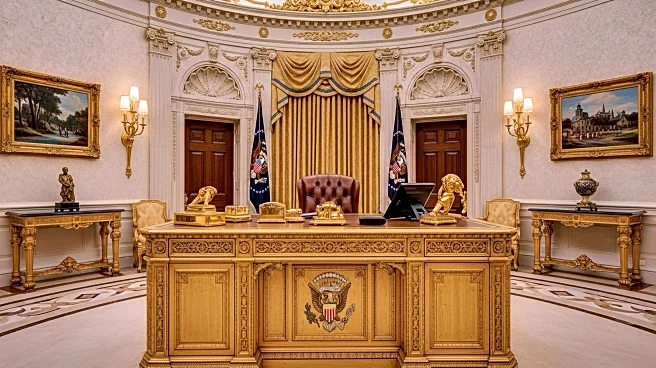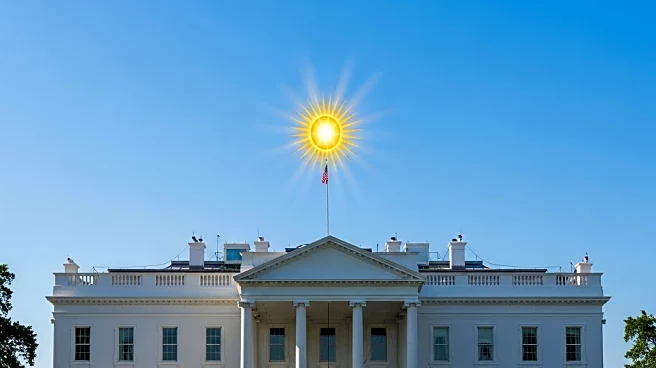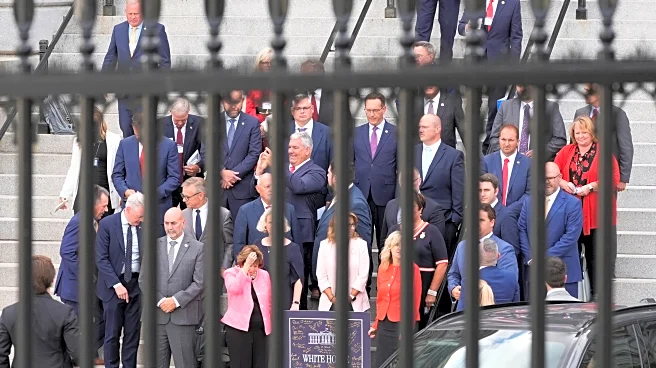What's Happening?
President Trump has publicly criticized a contractor for damaging the stonework in the White House's Rose Garden, which he recently renovated into a patio. Trump expressed his dissatisfaction on Truth Social, stating that the limestone had a significant gash, which he noticed while admiring the stonework. He questioned whether the damage was due to vandalism or incompetence. The incident was captured on security equipment, revealing that the damage was caused by a subcontractor using a broken steel cart for landscaping. Trump plans to replace the damaged stone, charge the contractor for the repairs, and prevent them from working at the White House again.
Why It's Important?
This incident highlights President Trump's ongoing focus on aesthetics and construction quality, reflecting his background in real estate development. The public criticism of the contractor underscores Trump's reputation for being demanding and exacting in his standards. The situation also brings attention to the management and oversight of White House renovations, which can have implications for government spending and contractor accountability. The broader significance lies in the potential impact on future contracts and the scrutiny contractors may face when working on high-profile government projects.
What's Next?
President Trump's decision to replace the stone and charge the contractor may lead to further scrutiny of the White House's renovation processes. Contractors working on government projects might face increased pressure to adhere to strict quality standards. Additionally, this incident could prompt discussions on the oversight and management of public property renovations, potentially influencing future policies on contractor selection and accountability.
Beyond the Headlines
The incident may also reflect broader themes of accountability and transparency in government projects. It raises questions about the ethical responsibilities of contractors and the importance of maintaining historical sites. The focus on aesthetics and quality in government property renovations could influence cultural perceptions of public spaces and their preservation.





